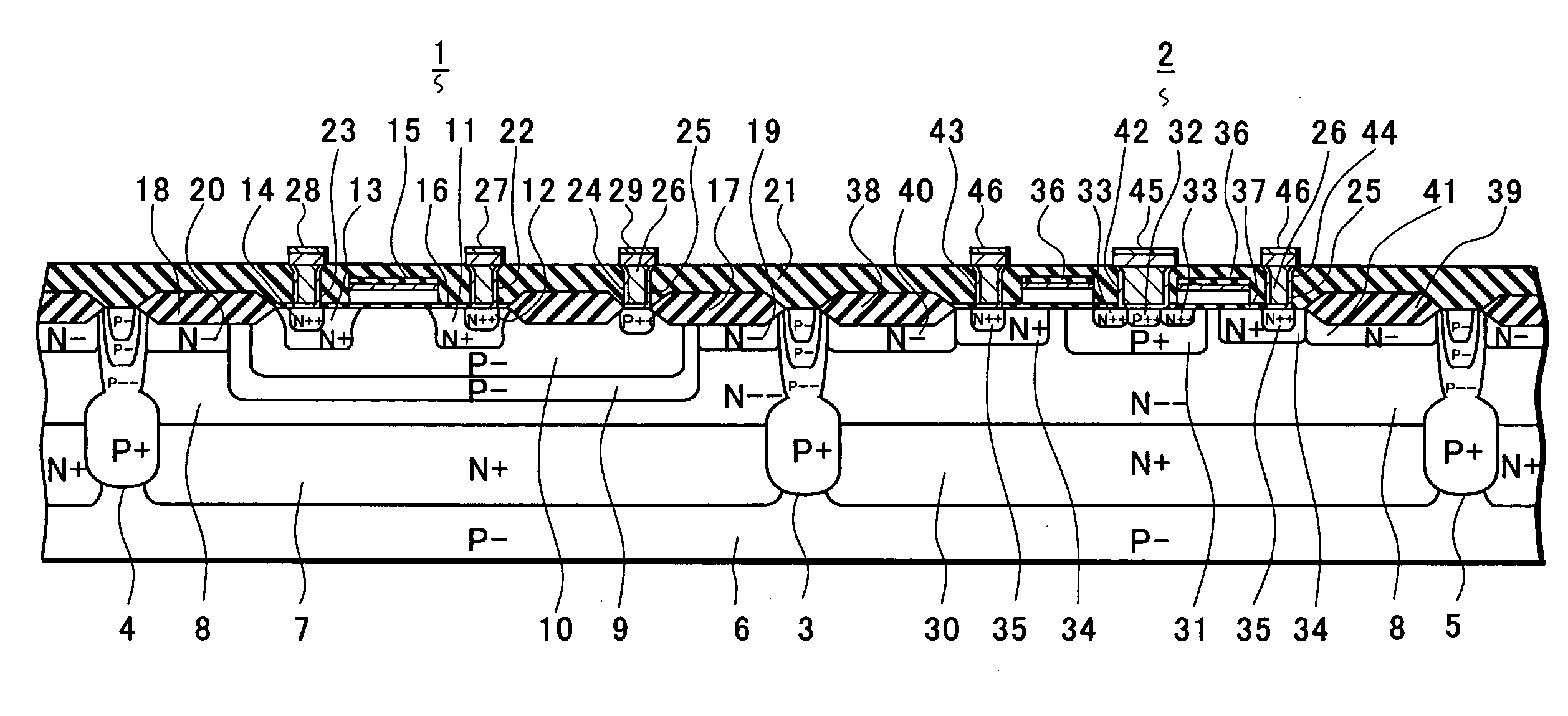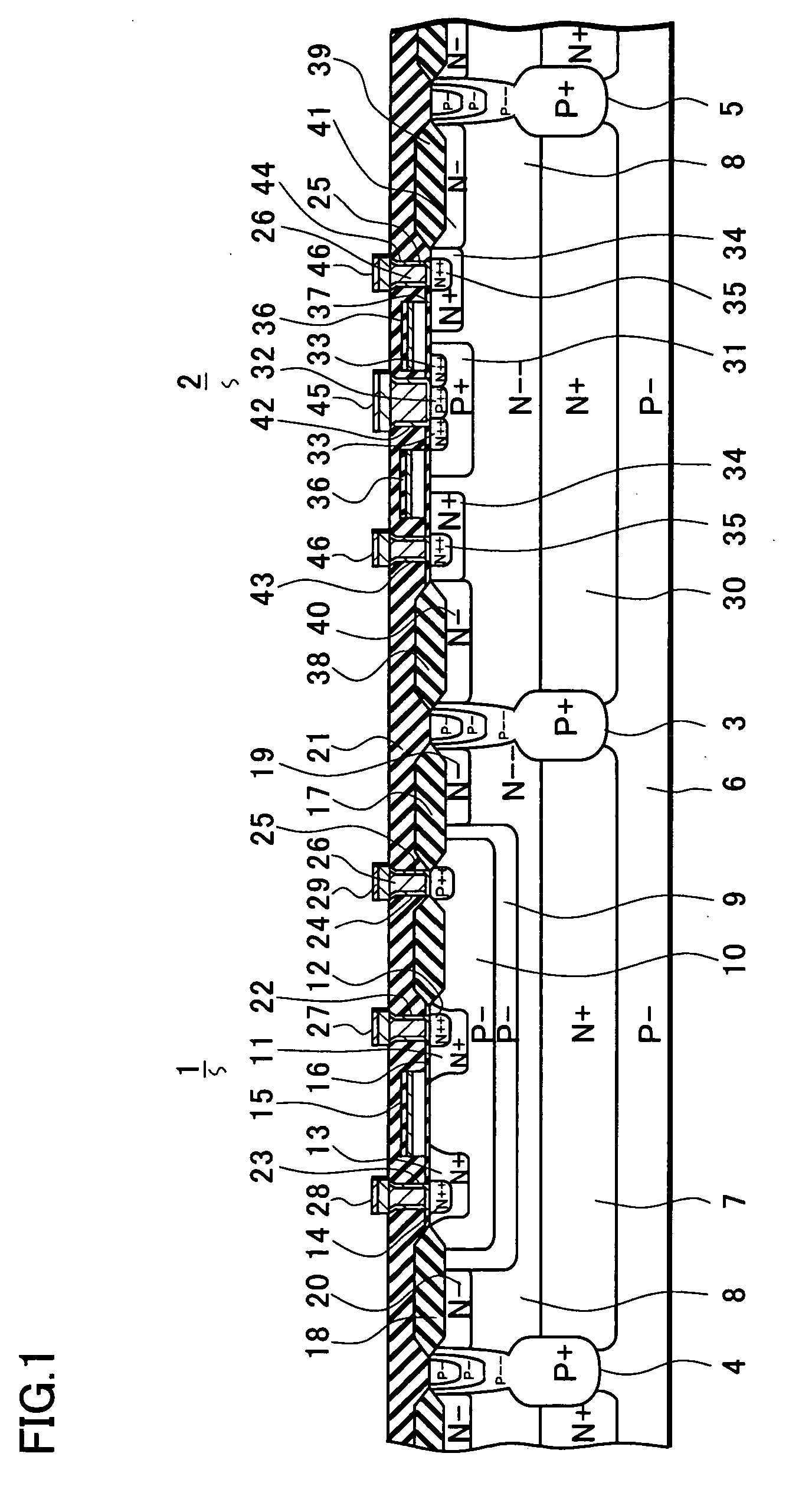Semiconductor device and method of manufacturing the same
a technology of semiconductors and semiconductors, applied in the direction of semiconductor devices, electrical equipment, transistors, etc., can solve the problems of difficult to achieve the reduction of device size and difficulty in reducing device size, and achieve the reduction of device size and other problems, to achieve the effect of reducing device size, improving withstand voltage characteristics, and increasing impurity concentration
- Summary
- Abstract
- Description
- Claims
- Application Information
AI Technical Summary
Benefits of technology
Problems solved by technology
Method used
Image
Examples
Embodiment Construction
[0022] A semiconductor device according to one embodiment of the present invention will be described in detail below with reference to FIGS. 1 to 3. FIG. 1 is a cross-sectional view for explaining the semiconductor device according to the embodiment. FIG. 2A is a cross-sectional view for explaining the semiconductor device according to the embodiment. FIG. 2B is a cross-sectional view for explaining a conventional semiconductor device. FIG. 3 is a top view for explaining the semiconductor device.
[0023] As shown in FIG. 1, an N channel type DMOS (double diffused metal oxide semiconductor) transistor 1 is formed in a first of element formation regions which are partitioned by isolation regions 3, 4 and 5; and an N channel type LDMOS (lateral double diffused metal oxide semiconductor) transistor 2 is formed in a second of the element formation regions. Incidentally, the description is given herein with regard to the embodiment in which the N channel type DMOS transistor 1 and the N ch...
PUM
 Login to View More
Login to View More Abstract
Description
Claims
Application Information
 Login to View More
Login to View More - R&D
- Intellectual Property
- Life Sciences
- Materials
- Tech Scout
- Unparalleled Data Quality
- Higher Quality Content
- 60% Fewer Hallucinations
Browse by: Latest US Patents, China's latest patents, Technical Efficacy Thesaurus, Application Domain, Technology Topic, Popular Technical Reports.
© 2025 PatSnap. All rights reserved.Legal|Privacy policy|Modern Slavery Act Transparency Statement|Sitemap|About US| Contact US: help@patsnap.com



